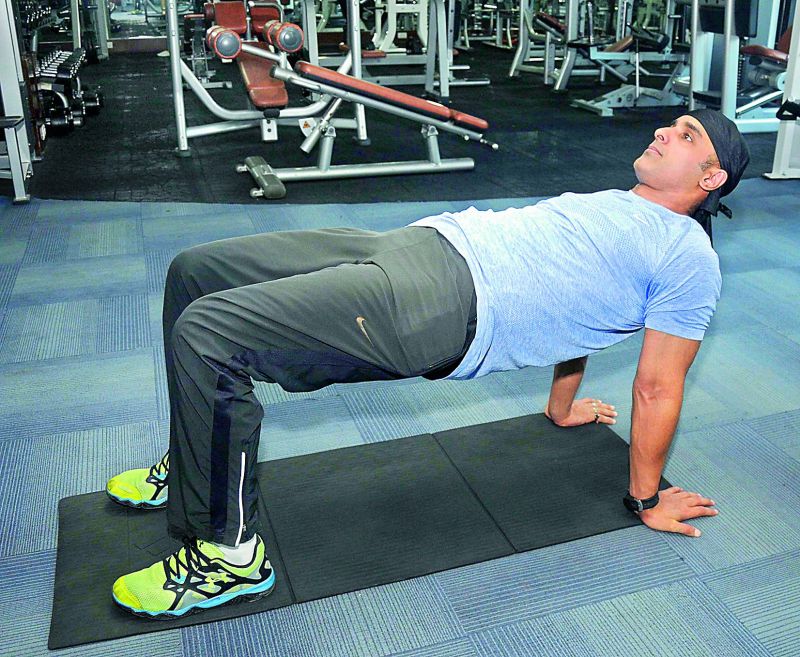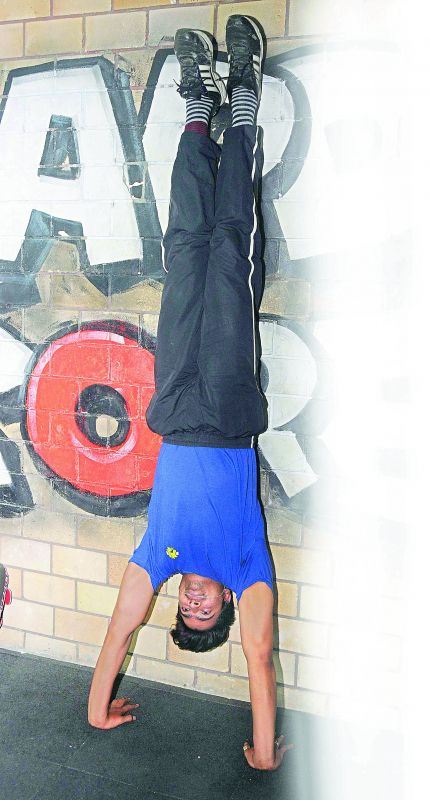EcStatic', to the core
These exercises work on the muscles without any actual movement. Isometric workouts are a great way to strengthen your core.

Isometric exercises are done without changing the length of the muscles. These exercises work on the muscles in a static position and demand muscle tension without any actual movement. Primarily, there are three ways in which the muscles are worked — concentric, which involves contraction or shortening of muscles; eccentric, which involves lengthening of muscles; and isometric, where the muscles tighten without any alteration in length. Most of the core conditioning exercises, yoga postures, and even pilates exercises are isometric.
Plank
Start in the plank position with your body straight and abs tight.
Quick Steps
1. Bend your arms. Lower your body, concentrating the weight on your forearms.
2. Hold the pose for 10 seconds. Try to increase the holding time
gradually.
3. Slowly get back to the starting position and repeat.
4. Repeat the steps five times to complete one set.

Reverse Plank
Like all plank variations, the reverse plank is an excellent way to strengthen your core. It’s especially good for the muscles in your lower back, your hamstrings and your glutes, but if you are properly braced, your abs will also feel the pinch.
If you have lower back troubles, a properly performed reverse plank could ease the pain by strengthening the core muscles. However, if you’re not doing it right and feel back or neck pain during the exercise, start with an easier variation first, like a regular plank.

Quick Steps
1. Start by sitting on the floor with your legs out in front of you. Put your hands on the ground, palms down just behind and outside your hips. Then push up and lift your body until it forms a straight line from head to toe.
Keep your arms and legs straight and brace your abs. Just as with every type of plank, don’t let yourself droop. If you can’t hold the position for 30 seconds, try supporting yourself on your forearms rather than with straight arms at first. A saggy plank is of no benefit at all.
Reverse Plank Variation
For those who want to add a little more activity into their workout, you can easily transition from the reverse plank into a set of straight bridges. It involves the same positions, but instead of holding your body up in the plank pose, you keep thrusting up and down with bent knees. A couple of sets of 20-25 bridges and you’ll yearn for stationary exercise once again.
‘V’ Hold Isometric Exercise
This is a great isometric exercise to target the abdominals. The added benefit is back strengthening that occurs as a side effect.
Quick Steps
1. Start by sitting on the floor with your legs extended, hands behind you and with fingertips facing your body.
2. Engage your core, point your toes and lift your hips up.
3. Lower your hips to the floor, lean back 45 degrees and extend your legs up to form a ‘V’ shape.
4. Hold for a count, and then repeat the sequence.
5. Continue for 10 to 15 repetitions.
Wall HandStand Isometric exercise
The wall handstand is a difficult yet effective isometric exercise. A handstand can be a great way to improve balance and upper body strength. However, it can be very hard to support the full weight of your body with just your hands, especially if you’ve never done a handstand before. Instead, you can do a handstand against the wall. You can lean slightly against the wall, taking some of the weight off your hands and neck.

Quick Steps
1. Sit with your back against the wall and legs straight in front of you.
2. Get on all fours.
3. To shift into the handstand position, pull your bottom into the air while straightening your legs and arms. As you do so, tuck your toes onto the floor so your feet spread against the wall. This will look something like the downward dog position of yoga.
4. Walk your feet a few steps up the wall. Now, you can begin shifting into the handstand position. Place one foot up the wall, curling your toes as you go. Lift your foot until it’s about the height of your hips. When you feel balanced and secure, lift your other foot up until it’s about hip height as well. Straighten your legs. This will push your bottom away from the wall, which may be frightening. Try to stay calm. Remain in that position for about 20 to 30
seconds.
— The writer is a celebrity fitness trainer
PlankReverse PlankWall HandStand
